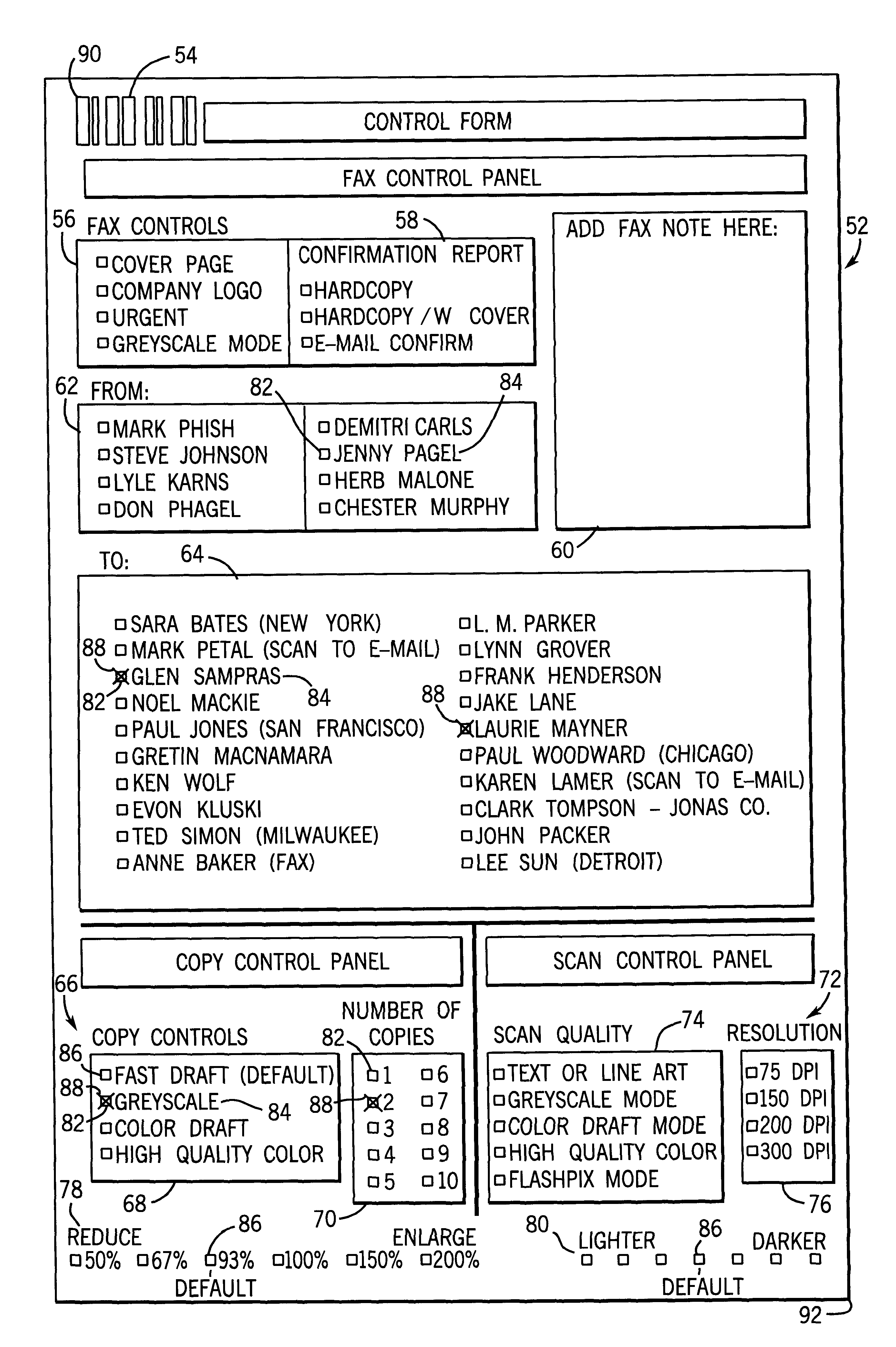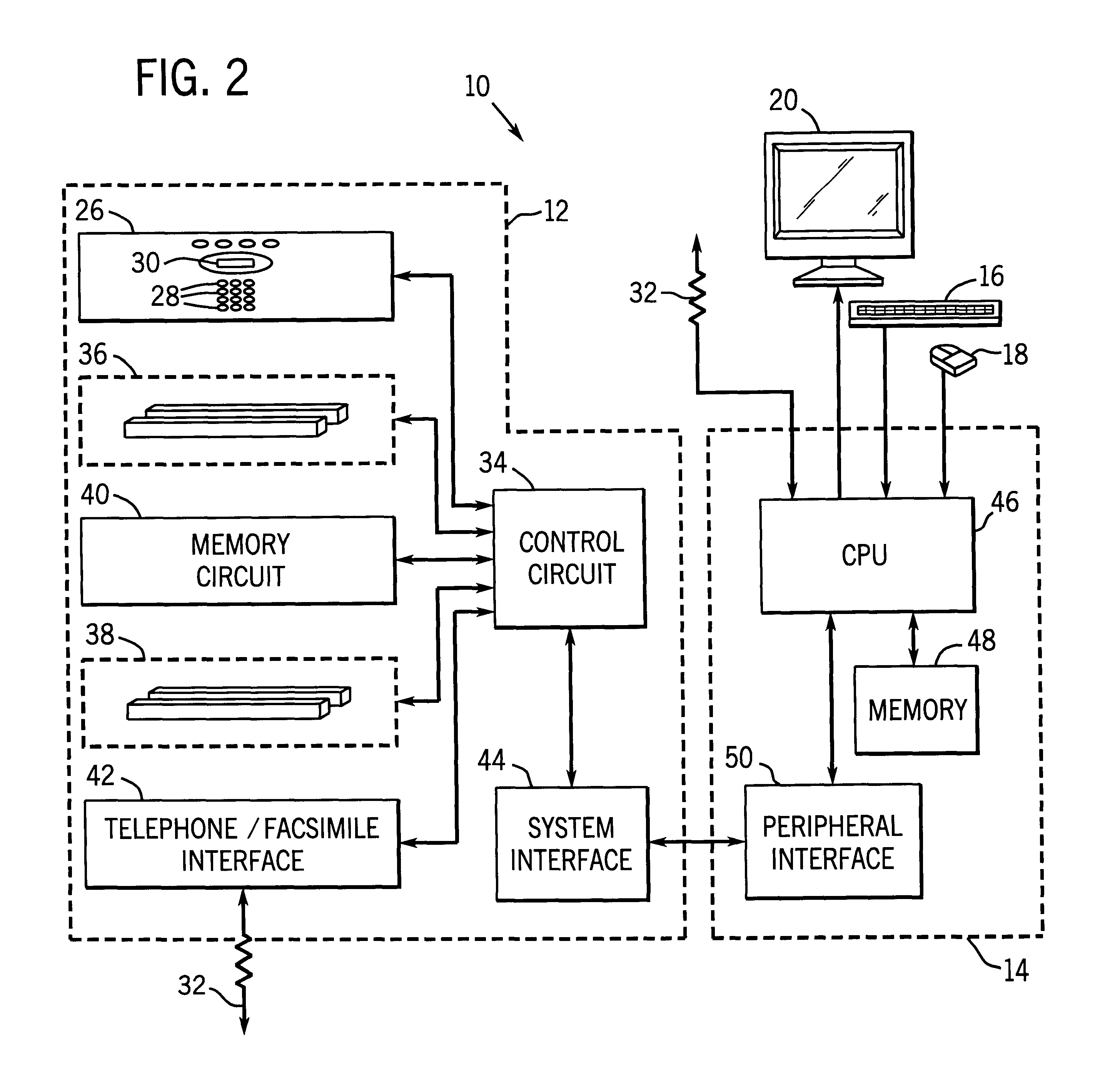Selective document scanning method and apparatus
a document scanning and document technology, applied in the field of scanners, can solve the problems of inconvenient feedback for operators, large digital files, unnecessarily occupying memory space and processing time, etc., and the technique is not particularly well suited to automated scanning processes
- Summary
- Abstract
- Description
- Claims
- Application Information
AI Technical Summary
Problems solved by technology
Method used
Image
Examples
Embodiment Construction
Referring now to the drawings, and turning first to FIG. 1, a document handling or a computer system 10 is illustrated as including a scanning device 12, a computer 14, a keyboard 16, a mouse 18, and a monitor 20. System 10 is particularly well suited to inputting user-defined data, such as through the keyboard, mouse and monitor, as well as for inputting data by digitizing indicia on a page in the scanning device. In the illustrated embodiment, system 10 includes a stand-alone computer designed to carry out instructions based upon indicia disposed on a document as described more fully below. It should be noted, however, that the system may include a series of networked computers, servers, peripheral devices, and so forth. Also, in the illustrated embodiment described herein, scanning device 12 is linked to computer 14, and serves multiple functions, including scanning or digitizing documents, printing documents, transmission of facsimiles of documents, and so forth. Accordingly, th...
PUM
 Login to View More
Login to View More Abstract
Description
Claims
Application Information
 Login to View More
Login to View More - R&D
- Intellectual Property
- Life Sciences
- Materials
- Tech Scout
- Unparalleled Data Quality
- Higher Quality Content
- 60% Fewer Hallucinations
Browse by: Latest US Patents, China's latest patents, Technical Efficacy Thesaurus, Application Domain, Technology Topic, Popular Technical Reports.
© 2025 PatSnap. All rights reserved.Legal|Privacy policy|Modern Slavery Act Transparency Statement|Sitemap|About US| Contact US: help@patsnap.com



